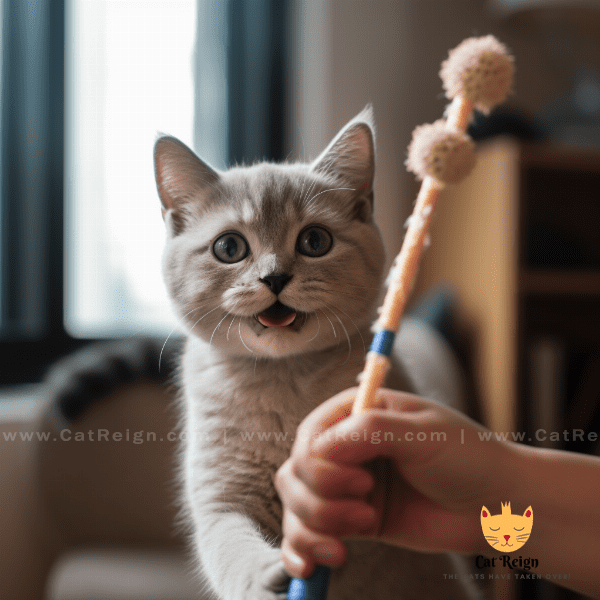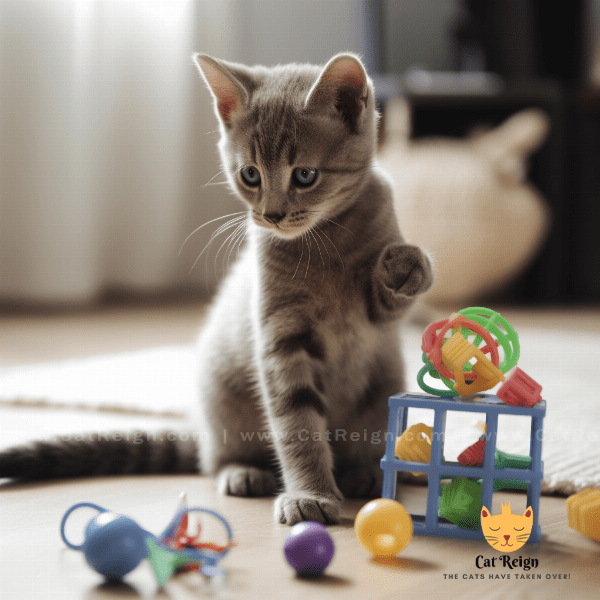Table of Contents
- Understanding Your Cat’s Behavior
- Identifying the Triggers for Aggression
- Possible Medical Reasons for Biting
- The Importance of Regular Vet Check-Ups
- Techniques for Handling and Disciplining Your Cat
- Tips for Reducing the Risk of Future Bites
- The Role of Positive Reinforcement
- Seeking Professional Help
- Coping with the Emotional Impact of a Cat Bite
- Maintaining a Safe and Happy Relationship with Your Cat.
Understanding Your Cat’s Behavior
Understanding your cat’s behavior is essential when trying to determine why they may have bitten you. Cats are independent animals, and they can become aggressive for various reasons. In this section, we will explore some of the common behaviors exhibited by cats that may lead to biting.
Natural Instincts
Cats are predators by nature, and they have a strong prey drive. This means that they have an instinctual desire to hunt and capture prey. Even if your cat is well-fed, they may still exhibit hunting behavior, such as stalking, pouncing, and biting. It’s essential to recognize these behaviors as natural instincts and not as intentional aggression towards you.
Fear and Anxiety
Cats can also become aggressive when they are afraid or anxious. Loud noises, unfamiliar people, or other animals can cause fear and stress in cats, leading to defensive behavior. If your cat is feeling threatened, they may bite as a means of self-protection. It’s important to provide your cat with a safe and comfortable environment to reduce stress levels and prevent aggressive behavior.
Territorial Aggression
Cats are also known to be territorial animals. They may become aggressive when they feel that their territory is being invaded or threatened. This aggression can be directed towards other animals or even humans. If your cat is displaying territorial aggression, it’s important to establish clear boundaries and provide plenty of personal space for your cat.
Playfulness
Cats love to play, and their play behavior can sometimes include rough play, such as biting and scratching. Although this behavior may not be intentional aggression, it’s still important to set boundaries and teach your cat appropriate play behavior.
Understanding your cat’s behavior is an essential step towards preventing future bites. By recognizing your cat’s natural instincts and identifying potential triggers for aggression, you can take proactive steps to keep yourself and your cat safe and happy.

Identifying the Triggers for Aggression
Identifying the triggers for your cat’s aggression is an essential step in preventing future bites. In this section, we will explore some common triggers that may cause your cat to become aggressive.
Pain or Discomfort
Cats may become aggressive if they are experiencing pain or discomfort. If your cat is in pain, they may lash out if you touch a sensitive area. For example, if your cat has an injury or is experiencing joint pain, they may bite if you accidentally touch the affected area. If you suspect that your cat is in pain, it’s important to take them to the vet for an examination.
Lack of Socialization
Cats that have not been properly socialized may become aggressive towards humans or other animals. If your cat was not exposed to different people or animals as a kitten, they may view them as a threat and become defensive. Socializing your cat can help them feel more comfortable and confident around other people and animals.
Overstimulation
Cats may become overstimulated during play or interaction, leading to aggressive behavior. If your cat is playing too rough or becoming too excited, they may bite or scratch as a means of releasing that energy. It’s important to monitor your cat’s behavior during play and take breaks if they become too stimulated.
Changes in Routine or Environment
Cats are creatures of habit, and changes in routine or environment can cause stress and anxiety. This stress can lead to defensive behavior, including biting. If you have recently moved or changed your cat’s routine, it’s important to provide them with plenty of time to adjust and acclimate to their new surroundings.
Unwanted Attention
Cats may become aggressive if they feel they are receiving unwanted attention. If your cat is trying to sleep or relax and you are bothering them, they may bite as a way of telling you to stop. It’s important to respect your cat’s boundaries and allow them to have their space when they need it.
Identifying the triggers for your cat’s aggression is an important step towards preventing future bites. By recognizing potential triggers and taking proactive steps to minimize them, you can help keep your cat and yourself safe and happy.

Possible Medical Reasons for Biting
In some cases, biting behavior in cats can be due to underlying medical issues. If your cat has suddenly started biting or has become more aggressive, it’s essential to rule out any medical causes. In this section, we will explore some possible medical reasons for biting in cats.
Dental Problems
Cats can experience dental issues, including gum disease, tooth decay, and abscesses. If your cat is experiencing dental pain or discomfort, they may become aggressive when you touch their mouth or head. If you suspect that your cat is experiencing dental issues, it’s important to take them to the vet for an examination.
Illness or Injury
Cats may become aggressive if they are feeling unwell or are in pain due to an injury. If your cat is exhibiting unusual behavior, such as hiding, avoiding food, or being lethargic, they may be experiencing an illness or injury. It’s important to take your cat to the vet for a check-up to rule out any underlying medical issues.
Hyperthyroidism
Hyperthyroidism is a common medical condition in cats that can cause behavioral changes, including aggression. Cats with hyperthyroidism may exhibit other symptoms such as increased appetite, weight loss, and increased thirst. If you suspect that your cat may have hyperthyroidism, it’s important to take them to the vet for an examination and appropriate treatment.
Neurological Issues
Cats can experience neurological issues such as seizures, brain tumors, or head injuries. These conditions can cause changes in behavior, including aggression. If your cat is exhibiting unusual behavior, such as disorientation or lack of coordination, it’s important to take them to the vet for a check-up.
Medications
Some medications can cause changes in behavior or mood in cats, including aggression. If your cat has recently started taking a new medication and has exhibited changes in behavior, it’s important to speak with your vet about potential side effects.
Possible medical reasons for biting in cats can be serious and require prompt medical attention. If you suspect that your cat’s biting behavior may be due to an underlying medical issue, it’s important to take them to the vet for a check-up as soon as possible.

The Importance of Regular Vet Check-Ups
Regular vet check-ups are an essential part of keeping your cat healthy and happy. In this section, we will explore the importance of regular vet check-ups and how they can help prevent biting behavior in cats.
Early Detection and Treatment of Medical Issues
Regular vet check-ups can help detect any underlying medical issues that may be causing your cat’s biting behavior. By catching these issues early, you can ensure that your cat receives prompt and appropriate treatment, which can help prevent the behavior from worsening. In addition, regular check-ups can help prevent future medical issues by allowing your vet to monitor your cat’s health and catch any potential problems before they become serious.
Behavior Counseling
Vets can also provide behavior counseling and advice on how to prevent biting behavior in cats. They can help you identify potential triggers and provide advice on how to modify your cat’s behavior. Additionally, they can provide tips on how to properly handle and discipline your cat, which can help prevent future biting incidents.
Preventative Care
Regular vet check-ups also include preventative care measures such as vaccinations, parasite control, and dental cleanings. These measures can help prevent common medical issues in cats, which can in turn prevent biting behavior. For example, dental problems can cause pain and discomfort, which may lead to biting behavior. Regular dental cleanings can help prevent dental issues and reduce the risk of biting behavior.
Building a Relationship with Your Vet
Regular vet check-ups also provide an opportunity to build a relationship with your vet. A good vet can provide valuable advice and support on all aspects of your cat’s health and well-being. Building a relationship with your vet can help ensure that your cat receives the best possible care and can help prevent future medical issues.
Regular vet check-ups are an essential part of keeping your cat healthy and preventing biting behavior. By detecting and treating medical issues early, receiving behavior counseling, and practicing preventative care measures, you can help keep your cat safe and happy.

Techniques for Handling and Disciplining Your Cat
Proper handling and discipline techniques are essential when trying to prevent biting behavior in cats. In this section, we will explore some effective techniques for handling and disciplining your cat.
Positive Reinforcement
Positive reinforcement is one of the most effective ways to modify your cat’s behavior. Rewarding your cat for good behavior, such as using a scratching post instead of furniture or using the litter box, can help reinforce these positive behaviors. Rewards can include treats, toys, or verbal praise. Avoid punishing your cat for bad behavior, as this can increase stress levels and lead to more aggressive behavior.
Redirecting Behavior
Redirecting your cat’s behavior is another effective way to prevent biting. If your cat is exhibiting aggressive behavior, redirect their attention to a toy or activity that they enjoy. For example, if your cat is biting your hand during play, stop playing with them and redirect their attention to a toy or treat.
Using a Spray Bottle
Using a spray bottle filled with water can be an effective way to discourage biting behavior. If your cat is biting or scratching, give them a light spray of water. This can startle them and help them associate biting with an unpleasant experience. However, it’s important to use this technique sparingly and only as a last resort.
Providing Plenty of Playtime and Exercise
Cats that are bored or under-stimulated may resort to biting as a means of releasing pent-up energy. Providing plenty of playtime and exercise can help prevent biting behavior by keeping your cat active and engaged. Offer a variety of toys, such as scratching posts, interactive toys, and puzzle feeders, to keep your cat entertained.
Using a Time-Out
If your cat is exhibiting aggressive behavior, it’s important to establish clear boundaries and consequences. Using a time-out can be an effective way to discourage biting behavior. If your cat bites or scratches, place them in a quiet room for a short period to allow them to calm down. Avoid using physical punishment, as this can increase aggression and fear.
Effective handling and discipline techniques are essential when trying to prevent biting behavior in cats. By using positive reinforcement, redirecting behavior, providing plenty of playtime and exercise, and establishing clear boundaries, you can help keep your cat safe and happy.

Tips for Reducing the Risk of Future Bites
Reducing the risk of future bites is essential for maintaining a safe and happy relationship with your cat. In this section, we will explore some tips for reducing the risk of future bites.
Proper Handling
Proper handling techniques are essential when trying to prevent bites. Always approach your cat calmly and avoid sudden movements or loud noises. When picking up your cat, support their weight with both hands and avoid squeezing or restraining them. It’s also important to allow your cat to initiate physical contact, such as petting, to avoid overstimulating them.
Providing Mental Stimulation
Mental stimulation is just as important as physical exercise for cats. Providing activities such as puzzle feeders and hiding treats can help stimulate your cat’s mind and prevent boredom. Mental stimulation can also help reduce stress levels and prevent aggressive behavior.
Consistent Rules and Boundaries
Consistent rules and boundaries are essential for preventing future bites. Establish clear rules and boundaries for your cat, such as where they are allowed to go and what activities are allowed. Enforce these rules consistently to avoid confusing your cat and causing stress.
Seeking Professional Help
If your cat’s biting behavior continues despite your efforts, it may be necessary to seek professional help. A certified animal behaviorist can provide advice and support on modifying your cat’s behavior and preventing future bites. Your vet may also be able to refer you to a qualified behaviorist.
Reducing the risk of future bites is essential for maintaining a safe and happy relationship with your cat. By using proper handling techniques, providing personal space, regular playtime and exercise, mental stimulation, consistent rules and boundaries, and seeking professional help when necessary, you can help prevent future biting behavior in your cat.

The Role of Positive Reinforcement
Positive reinforcement is a powerful tool when it comes to modifying your cat’s behavior and preventing biting. In this section, we will explore the role of positive reinforcement in preventing biting behavior.
Reinforcing Good Behavior
Positive reinforcement involves rewarding good behavior to encourage your cat to repeat it. For example, if your cat uses the scratching post instead of furniture, reward them with a treat or verbal praise. This helps reinforce the desired behavior and encourages your cat to continue using the scratching post instead of furniture.
Building Trust and Confidence
Positive reinforcement can help build trust and confidence between you and your cat. By rewarding good behavior and avoiding punishment, you are creating a safe and positive environment for your cat. This can help reduce stress levels and prevent defensive behavior, such as biting.
Modifying Undesirable Behavior
Positive reinforcement can also be used to modify undesirable behavior, such as biting. Instead of punishing your cat for biting, redirect their attention to a toy or activity that they enjoy. Reward your cat when they engage in the desired behavior, such as using the scratching post or playing with a toy. This can help modify their behavior and encourage them to engage in positive activities instead of biting.
Improving Overall Behavior
Positive reinforcement can also help improve your cat’s overall behavior by encouraging them to engage in positive activities and behaviors. Regularly rewarding good behavior can help reinforce these positive behaviors and encourage your cat to engage in them more often.
Avoiding Punishment
It’s important to avoid punishment when trying to modify your cat’s behavior. Punishment can increase stress levels and lead to defensive behavior, such as biting. Instead, use positive reinforcement to reward good behavior and modify undesirable behavior.
Positive reinforcement is an effective tool when trying to prevent biting behavior in cats. By reinforcing good behavior, building trust and confidence, modifying undesirable behavior, improving overall behavior, and avoiding punishment, you can help create a safe and positive environment for your cat and prevent future biting incidents.

Seeking Professional Help
If your cat’s biting behavior persists despite your efforts, seeking professional help may be necessary. In this section, we will explore the benefits of seeking professional help and when it may be necessary.
Benefits of Seeking Professional Help
A certified animal behaviorist can provide valuable advice and support on modifying your cat’s behavior and preventing future biting incidents. They can help you identify potential triggers and provide effective techniques for modifying your cat’s behavior. A behaviorist can also provide advice on environmental modifications, such as providing personal space and mental stimulation, to prevent future biting incidents.
When to Seek Professional Help
If your cat’s biting behavior is severe or has caused injury, seeking professional help is essential. A behaviorist can help you address the behavior and provide a personalized plan for modifying it. Additionally, if your cat has exhibited sudden changes in behavior or aggression, seeking veterinary attention is necessary to rule out any underlying medical issues.
What to Expect
During a behavior consultation, the behaviorist will assess your cat’s behavior and identify potential triggers. They will provide advice and techniques for modifying the behavior, as well as recommendations for environmental modifications. It’s important to follow the behaviorist’s recommendations consistently to ensure the best possible outcome.
Conclusion
Seeking professional help is an important step in preventing and modifying biting behavior in cats. A certified animal behaviorist can provide valuable advice and support on modifying your cat’s behavior and creating a safe and positive environment. If your cat’s biting behavior persists despite your efforts or has caused injury, seeking professional help is essential. By following the behaviorist’s recommendations consistently, you can help prevent future biting incidents and maintain a safe and happy relationship with your cat.

Coping with the Emotional Impact of a Cat Bite
Experiencing a cat bite can be a traumatic and emotional experience. In this section, we will explore some tips for coping with the emotional impact of a cat bite.
Seek Medical Attention
If you have been bitten by a cat, it’s important to seek medical attention as soon as possible. This can help prevent infection and ensure proper wound care. Seeking medical attention can also help alleviate anxiety and worry about potential health risks.
Addressing Fear and Anxiety
Experiencing a cat bite can lead to fear and anxiety, especially if the bite was unexpected or severe. It’s important to address these feelings and seek support from friends, family, or a mental health professional. Talking about your feelings and fears can help reduce anxiety and promote healing.
Avoiding Negative Thoughts
It’s important to avoid negative thoughts and self-blame when coping with a cat bite. Remember that cat bites can happen to anyone and are not a reflection of your worth or character. Focus on positive thoughts and actions, such as seeking medical attention and implementing preventative measures to prevent future bites.
Practicing Self-Care
Practicing self-care is essential when coping with the emotional impact of a cat bite. This can include getting enough sleep, eating a healthy diet, and engaging in regular exercise or physical activity. Practicing mindfulness or meditation can also help reduce stress levels and promote relaxation.
Addressing Trauma
If the cat bite was severe or traumatic, it may be necessary to address the trauma with the help of a mental health professional. This can involve techniques such as cognitive-behavioral therapy or exposure therapy to help reduce anxiety and promote healing.
Experiencing a cat bite can be a traumatic and emotional experience. By seeking medical attention, addressing fear and anxiety, avoiding negative thoughts, practicing self-care, and addressing trauma with the help of a mental health professional if necessary, you can cope with the emotional impact of a cat bite and promote healing.

Maintaining a Safe and Happy Relationship with Your Cat.
Maintaining a safe and happy relationship with your cat is essential for their well-being and yours. In this section, we will explore some tips for maintaining a safe and happy relationship with your cat.
Understanding Your Cat’s Behavior
Understanding your cat’s behavior is essential for maintaining a safe and happy relationship. Learn to recognize your cat’s body language and vocalizations, as these can indicate their mood and level of comfort. This can help you avoid triggering potential aggressive behavior and maintain a positive relationship with your cat.
Providing Personal Space
Providing personal space is important for maintaining a happy relationship with your cat. Cats need a designated space to retreat when they need space or alone time. Providing a cat tree or bed can give your cat a place to relax and retreat when needed.
Regular Playtime and Exercise
Regular playtime and exercise are essential for maintaining a happy relationship with your cat. Offer a variety of toys and activities to keep your cat entertained and active, such as scratching posts, interactive toys, and puzzle feeders. Playtime and exercise can also help prevent boredom and reduce stress levels.
Grooming and Handling
Regular grooming and handling can help maintain a happy relationship with your cat. This can include brushing their fur, trimming their nails, and handling them for short periods each day to get them used to being touched. This can help your cat feel more comfortable with you and reduce the risk of defensive behavior, such as biting.
Maintaining a Safe Environment
Maintaining a safe environment is essential for maintaining a safe and happy relationship with your cat. Keep toxic substances out of reach, such as household cleaners and plants, and secure any potential escape routes, such as open windows and doors. This can help prevent accidents and keep your cat safe and healthy.
Regular Vet Check-Ups
Regular vet check-ups are essential for maintaining a happy and healthy relationship with your cat. Schedule regular check-ups with your vet to ensure that your cat is up-to-date on vaccinations and to identify any potential health issues early on. This can help prevent potential health issues and ensure that your cat is in good health.
Maintaining a safe and happy relationship with your cat is essential for their well-being and yours. By understanding your cat’s behavior, providing personal space, regular playtime and exercise, grooming and handling, maintaining a safe environment, and scheduling regular vet check-ups, you can help create a positive and healthy environment for your cat.




